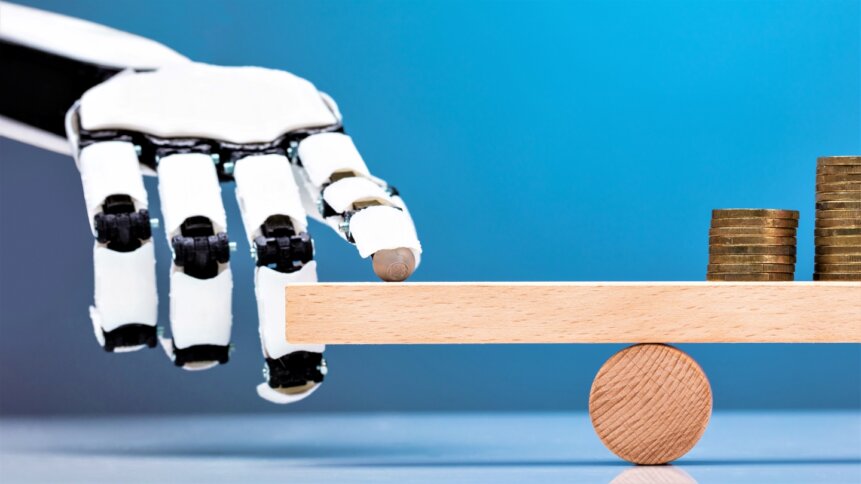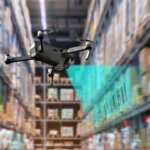Robot tax: MIT economists calculate automation levy

|
Getting your Trinity Audio player ready...
|
Would you back a robot tax, and if so, how much would you charge? The march of technology has a habit of delivering mixed fortunes. Advances in automation are pushing production efficiencies to new heights, reducing unit costs, and raising profits. Replacing employees with robots can free up staff from performing repetitive tasks, which can go one of two ways.
In some cases, automation opens the door to more interesting and fulfilling work – for example, employees can move up to supervisor positions or play a greater strategic role in company operations. But automation can also put staff out of a job, raising unemployment. And to manage this scenario, some thinkers are proposing legislation dubbed a robot tax.
Ongoing debate
Microsoft co-founder Bill Gates was criticized by some commentators when he spoke out in favor of a robot tax in 2017. But today, the human cost of advances in automation that Gates highlighted still remains. Governments too, could have an income hole to fill. “Right now, if a human worker does $50,000 worth of work in a factory, that income is taxed,” he pointed out when interviewed. “If a robot comes in to do the same thing, you’d think that we’d tax the robot.”
Critics argue that taxing robots will put the brakes on automation and interferes too strongly with technological progress. But Gates countered that retraining workers – using proceeds from a robot tax – for sectors facing a shortage in labor would put the economy ‘net ahead’ overall. The Microsoft co-founder isn’t the only one advocating for legislation to compensate for the rise of the robots.
In the same year that Gates spoke out, the EU discussed the idea of a robot levy, but didn’t come to any formal agreement. Politicians in the US, Japan, Canada, and the UK have also raised the topic of a robot tax, but again there were mixed views on the matter. Interestingly, South Korea has wound back some of its incentives for firms to invest in automation. While not a direct tax, it does mark a shift in thinking at a national level.
Sticking to the facts alone, the International Federation of Robotics notes that 60,000 industrial robots were installed across the US automotive industry between 2010 and 2015. Over that five-year period, the number of employees in the sector reportedly rose by 230,000. The Brookings Institution – a US think tank based in Washington, DC – also has reservations about putting a duty on automation.
“While the arguments in favor of a robot tax may be well-intentioned, robot taxes are a misguided idea that would have negative consequences for firms, their workers, and ultimately the economy,” writes Robert Seamans, a Brookings Nonresident Senior Fellow. “To begin with, the assertion that robots are taking jobs is not well founded. Recent research shows that firms that adopt robots experience more employment growth than those that do not.”
Difficulties arise in how to define a robot – for example, do you include machine learning and artificial intelligence (AI) systems? AI has the potential to displace a huge number of jobs. According to AI pioneers, repetitive tasks that can be performed by humans in 60 seconds or less are ripe for AI automation. Again, this may prompt retraining and the opportunity for employees to seek more interesting work. But the transition will need to be managed.
Not all staff will be happy to give up their current jobs. The overall impact of AI on employment could be much more widespread than the growth in robotics. AI could displace white-collar jobs as well as those in manufacturing operations.
Settling the argument
To try and resolve the debate on the merits of a robot tax, MIT economists have been busy modeling scenarios based on data from a number of studies. After scrutinizing all the evidence, the researchers suggest that ‘the optimal policy in this situation would indeed include a tax on robots, but only a modest one.” Specifically, the authors of the work — Arnaud Costinot and Iván Werning – found that ‘a tax on robots should range from 1 percent to 3.7 percent of their value’ to minimize income inequality.
The researchers also note that there are other levers that could be pulled to address upcoming issues associated with automation – for example, income tax could be another mechanism for legislators to consider. “We think it’s incorrect to discuss these taxes on robots and trade as if they are our only tools for redistribution,” said Werning.
Also, projecting much further ahead, the impact of increased automation appears to flatten out once the economy becomes saturated with robots. “That marginal robot you are getting in the economy matters less and less for inequality,” adds Costinot. The team has published its findings in The Review of Economic Studies.









